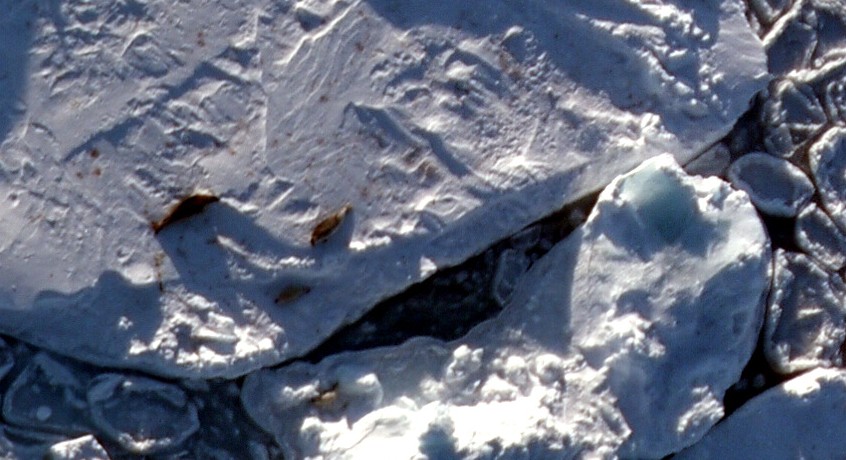Main activities
Main activities
Automatic species and age classification of ice breeding seals
The abundance estimates of harp and hooded seals are based on the number of counted pups in aerial images. The pups are localized on ice, and, at least for hooded seals, their mother is usually present within a few meters. The fur of the hooded seal pup is black/grey, whereas the fur of the harp seal pup is white. The hooded seal pups are therefore expected to be easier to detect than the harp seal pups from colour images. Harp seal pups and their mothers appear like small grey blob-like features in the images. However, since the pack-ice in the Greenland Sea where breeding occur consists of many ice leads, shadows from ice/snow blocks and spots of water on the ice, there are consequently many interfering objects with similar or greater contrast making identification of seals more difficult.
Semi-automatic detection of coastal seals
Abundance estimation of grey seals has many similarities with abundance estimation of harp and hooded seals using pup counts. In Canada, the white coloured grey seal pups occur on the drift ice, so the same challenges as for counting harp seal pups applies. At the Norwegian coast the grey seal pups occur on rocky shores, alone or in groups, between grass turfs or in snow. The mother is usually present in close vicinity of their pup and is easier to detect than the pups. Counting is carried out in September-November and rough weather and suboptimal light conditions can obscure the quality of images. For harbour seals, however, all age groups are photographed during haul-out on shores during moult in August. The challenge of automatically detecting harbour seals is also considered to be substantial, due to low contrast between background (black/grey) and fur (black/grey). However, harbour seals tend to appear in groups. Some might be easier to detect than others, and if one seal is detected in an image there is a high probability that more seals will be found on the same image and in the vicinity of the first
Challenges
NR’s main activities will be focused on solving the following challenges:
- Automatic detection of images with no seals. This approach is particularly interesting for a semi-automatic approach, leaving the expert reader to only inspect a small fraction of the acquired images. However, the process of determining if any potential seals are present in the image is not trivial, and new methodology is needed.
- Automatic detection and localization of seal pups and adults in the image. Obtaining good detectors for seals is a key challenge in this research. How the optimal seal detector should be designed is unclear and new methodology for this application is needed. This task is challenging since there may be many similar objects (e.g. stones for coastal seals and shadows from ice/snow blocks and spots of water on the ice) in the image
- Automatic separation of different seal species. This challenge is also of great importance for counting ice-breeding seals. Harp and hooded seals may appear close to each other and acquired images can contain both species. Thus, it is necessary to distinguish them in order to obtain precise abundance estimates
- Determination of the optimal sensor configuration. Until now, only colour images have been applied as a means for counting the number of seals. However, for optimal performance, we may need to use alternative sensors. In particular, for determining if there are any seals present in the image, use of an infrared sensor is interesting to explore.


 Hvordan komme til NR
Hvordan komme til NR Del på sosiale media
Del på sosiale media Personvernerklæring
Personvernerklæring